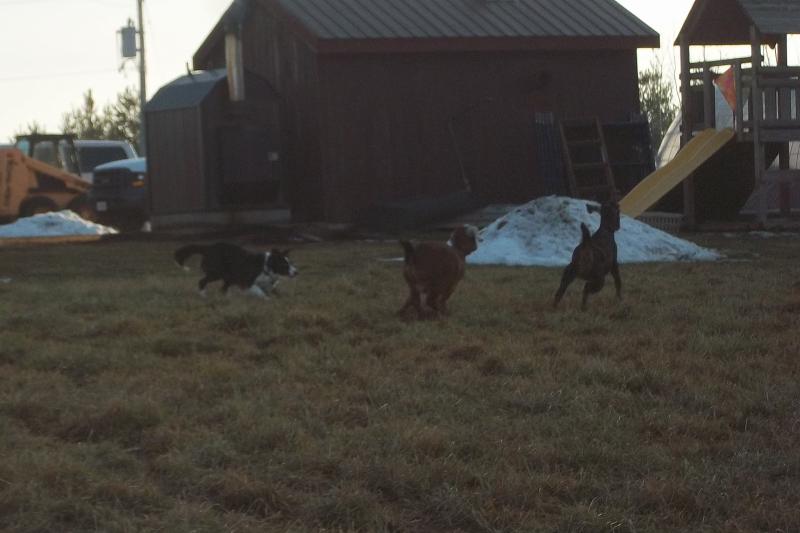There are many herding breeds, each with their own style. The ES is adept at rating his stock and exerting just enough force to get the job done. They are not “hard wired” to herd like some breeds but work more out of a sense of order and to some extent a bond with their stock. They are capable of hanging out with the stock when their help isn’t needed but will not hesitate to get after errant livestock who don’t adhere to the “rules”, even acting independently to achieve the status quo. Here is Alice rounding up the yearling goats that had gotten out of their paddock. She knows where they’re supposed to be and heading to the house isn’t it.

The interesting thing is that the stock can be let out on purpose to graze the field or around the buildings and with a few reminders the dogs will understand that this “bending of the rules” is OK and they’ll pretty much leave them alone. With a little more training, they can be taught to allow the animals access to certain areas and not others. Ivy learned very early on that free range poultry were not to come too close to the house/garden and would shoo them back to the barn for me. Sawyer and Rudy’s mother, Holly, regularly kept our draft horses out of the drive, away from the house and out of our woods when we would let them out to graze on the flush of grass in our hayfield.

In the case of a dog that picks up on rules easily and has a natural enforcer mentality, it may seem like they work naturally without any training. This can lead to unrealistic expectations, disappointment and even bad habits. All dogs need supervision and feedback from their owners to know the boundaries of acceptable behavior. Teach an ES by modeling for them what you want them to do and pretty soon they will try to help. Praise the good, correct the bad and over time with consistent exposure, you will have a dog that understands the job at hand and works in partnership with you.
